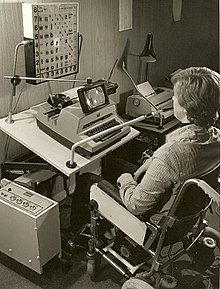What is Creative Destruction?

The eighties and nineties were the era of VHS tapes. Invented by the Japanese company JVC, Video Home System (VHS) - or the 'deck' as it was locally known - was an instant hit around the world. Even in small towns of India, video shops that rented VHS players and cassettes were a lucrative business.
The era, however, did not last long. Along came the Compact Discs. Music, movies, data files - the flashy CDs could store anything. They could be played on TVs (hooked with CD players) and computers. Today, whatever CDs are left behind are used as reflectors on bicycles or for art-from-waste projects.
Streaming and cloud storage have made the CD obsolete, just like its predecessor. Tomorrow, the streaming system could be replaced with something else. This process of evolution of technology - from VHS tapes to streaming platforms or landline phones to smartphones - is called Creative Destruction.
The technological advancements defined above are recent, but the concept of creative destruction has been defined and debated by economists, sociologists, and political thinkers since the 19th century. The industrial revolution and colonialism were the two defining historical events that shaped its definition.
Foundational theories
Creative Destruction is a critical component of the capitalist system of economics and politics.Yet, a first clear definition for the process was given by the father of communism –an opposing economic and political throught Karl Marsx. Though he did not use the term Creative Destruction, he defined the concept as a ‘’contant upheaval and change within the capitalist system.’’
In his exhaustive work tirled, ‘capital; Acriyique of Political Economy; published as three volumes in 1867, 1885, and 1894. Marx writes: "The bourgeoisie cannot exist without constantly revolutionizing the instruments of production, and thereby the relations of production, and with them the whole relations of society."
This encapsulates the process of technological innovations that we see today. Take for instance the case of Artificial Intelligence (AI). It is the new "instrument of production that is replacing older technologies and even humans in some cases. As a result, the "relations of production also changes, with new skills becoming essential for upward mobility in the job market. The "relations of society" has also changed as engineers with Al skills now draw higher pay packages compared to engineers in other sectors.
Much later, in the 20th Century, German economist Joseph Schumpeter popularized the term Creative Destruction, which was coined by another.
German economist Werner Sombart. In his book Capitalism, Socialism and Democraay, published in 1942. Schumpeter extrapolates the Marxist thought to describe the destructive process of a transformation caused by innovation for instance, the slow death of landline phones.
Schumpeter says Capitalism is a method of economic change which can never be stationary. The fundamental impulse that keeps the system running is new consumer goods, new methods of producing or transporting them, new markets to sell them, and new forms of organisations that the system creates. This is a fairly accurate description of how businesses work in our world today.
Modem examples
Schumpeters work is pretty accurate in defining the current startup era. He says innovative entry by entrepreneurs is the disruptive force that sustains economic growth, even as it destroys the value of established companies that enjoyed some degree of monopoly. A classic example for this is the case of social media eating into the market control of mainstream medin
However, Schumpeter was pessimistic about the sustainability of this process. Seeing it as leading eventually to the undermining of capitalism's own institutional frameworks. The capitalist process in much the same way in which it destroyed the institutional framework of feudal society abo undermines its own, he said.
Today, most technology majors are focussed on continuous innovations that push boundaries of human imagination. As we grapple to get a grasp over the everevolving trends in technology, its important to leam about the great minds that prophesied this era.
Picture Credit: Google

